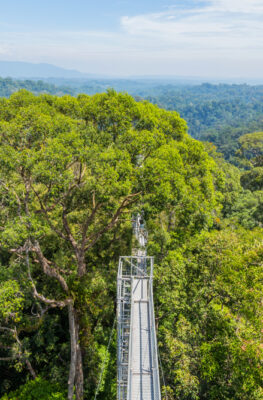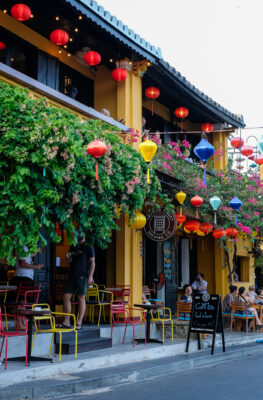Published on June 8, 2018
Stall owner using cellphone in Hanoi, Vietnam. Image © shankar s./Creative Commons
Good news for Southeast Asia visitors: surfing on the ‘Net with your cellphone while traveling is easier than ever, with far less chances of running up those astronomical roaming bills. 3G signals cover the vast majority of Southeast Asia, with 4G/LTE signals quickly reaching parity.
That means you can Instagram, surf, and call to your heart’s content in most major travel destinations in the region. Every country has its own cellular provider – even tiny Brunei has two, and Myanmar is making up for lost time by having three different cellular providers for the whole country!
To make sure you stay connected wherever you go, follow these simple tips suggested by experienced travelers:
Buy the SIM card directly at the airport when you arrive. The great majority of airports in Southeast Asia have SIM card vendors at their respective arrival lobbies. German Backpacker Patrick Muntzinger (Facebook|Twitter|Instagram) suggests buying as soon as you arrive, instead of waiting till you get to your hostel or hotel.
“While it’s always easy to find SIM cards also on the streets, it happened more than once that I had trouble to actually find someone explaining me the different package options and the respective prices due to the language barrier,” Patrick explains. “One big advantage of buying your SIM card at the airport is that the person selling you the card most likely speaks English and can help you booking your internet data package.”
The experienced sales staff can install your selected SIM card and configure your phone in a snap, “since they are used to foreigners buying sim cards,” says Patrick. “Sometimes, they also have special tourist deals offered.”
Buy the biggest data package you can afford. You’ll never need to actually call anyone using your phone line, if you can top up your 3G or 4G data on the new SIM. MySoulTravels‘ Pujarini Mitra (Facebook|Twitter|Instagram) counts on the high-speed mobile data signals that are “generally available in all main cities, and the speed varies city to city,” she explains.
To tap that signal, you’ll need to top up: “While there are many call packages and data packages available, we have always found it more economical to get the data packages top up,” explains Pujarini. “This not only helps us keep up with work and on social media, it’s really convenient to do video calls through WhatsApp and Skype.”
Costs for data access depend on the data provider and the country you visit: “There are multiple data top up packages available as per your need and getting a top up from a mobile store is pretty easy,” explains Pujarini.
Kids using their tablets on a Vietnam train. Image courtesy of Bron Leeks.
Ask if your home plan has a data roaming option. Using your home plan does not necessarily need to end in tears (and extravagant phone bills). Smiths Holiday Road’s Bronwyn Leeks (Facebook|Pinterest|Instagram) uses the home plan when traveling throughout Southeast Asia with her family.
“For an extra $5 a day while travelling we can access our home internet plan through Vodafone,” Bron tells us. “It means in most countries we can use our phones and tablets as we would back home.”
Without needing to buy new SIMs for each device, Bron’s kids “can hotspot their tablets to our phones and access the Internet while exploring,” she tells us. “This comes in handy while travelling on overnight trains like we did in Vietnam. The kids are able to stay connected with their teachers at school to communicate with their class about their travels and keep up to date with sharing their travels through online journals.”
Even in areas without a signal, Bron manages to find a way: “We also utilise free WiFi within some city centres, McDonalds and airports enabling us all to stay connected.”
Use airplane mode to conserve energy. Joanna “Oana Roua” of the World in my Pocket (Facebook|Twitter|Instagram) considers her smartphone an essential travel tool – so essential, she runs the battery down faster than most travelers.
To forestall awkward low-batt problems, Joanna travels with “my phone switched off, on flight mode, with the WiFi setting turned on so that I can connect to the internet,” she explains. “This guarantees the battery life will be longer, and I won’t need to charge it for at least 24-30 hours.”
Joanna found this useful when traveling in areas like the Perhentian Islands in Malaysia, “where the electricity was rationed and only available for a couple of hours in the evening.”
The trick also forestalls astronomical data roaming charges, she finds: “How many times did you arrive in a new country and got a notification on your phone that you have been charged for a day’s worth of data, just because you forgot your mobile data setting on? I know I have, quite a few times!”






